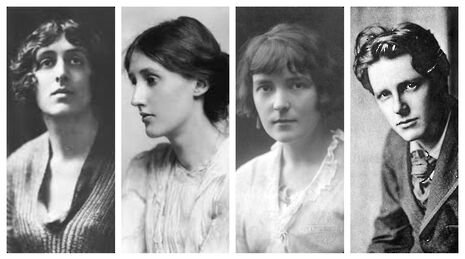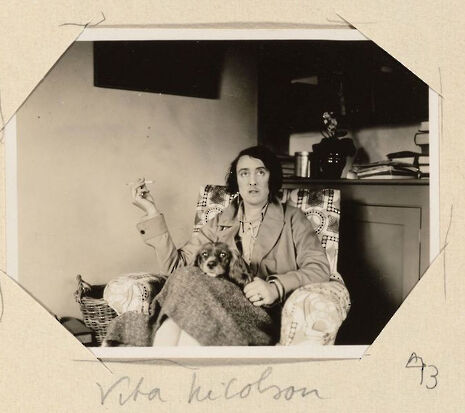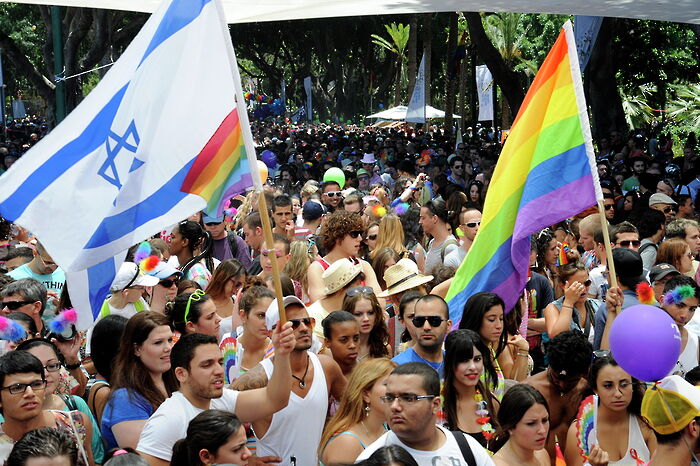The Bloomsbury Group wasn’t ‘unconventional’. It was bisexual
Joel Lucyszyn examines the bisexuality of Bloomsbury, and the need to put the ‘bi’ back in biography

One of the most startling realities about bisexuality is that its erasure is accompanied by its blaring presence. No more is this presence felt than in groups of artistic, cultural and literary innovators. For the philosopher and academic Allan Bloom, the respectable place for sexual deviation was in Bohemia, for it justified its deviancy through intellectual and artistic achievement that he saw as symbiotic with sexual transgression. Bloom’s take on sexuality in artistic circles is undoubtedly quixotic, but he is responding to fact: from Bloomsbury to Harlem, from Paris to Berlin to Greenwich Village, bisexuality had not only thrived but imprinted itself on culture. It’s worth surveying this overlooked bisexuality.
The Bloomsbury Group is perhaps most relevant to this article because of its personal relationship with Cambridge. Modern scholarship on sexuality is not nearly as progressive as it would like to think: there are countless articles, essays and books on the sexuality of Bloomsbury writers such as Virginia Woolf, and they are overwhelmingly monosexual. I remember reading in first year that at various stages in her life, Woolf could be referred to as heterosexual or homosexual in her desires and attitudes. You can just picture an academic, agitatedly pouring over their notes and coming to the conclusion that Woolf was a ‘contradiction’. The most logical explanation, surely, was bisexuality?
The conspicuous absence of bisexuality in our discussions of the Bloomsbury Group is startling; there is no sexual characterisation for them better than bisexual. Duncan Grant was the partner of John Maynard Keynes and Adrian Stephen before he entered into a relationship with Vanessa Bell. Woolf and Vita Sackville-West were married to men and had relationships with women. Katherine Mansfield and Dora Carrington were both bisexual women. Rupert Brooke, who had relationships with women, exchanged letters describing same-sex encounters with James Strachey (a member of the Bloomsbury Group): something you certainly don’t learn during your fifteenth re-reading of The Soldier in AS English.
“Bisexual Bloomsbury was brushed under the carpet of its artistic achievements”
Bisexual Bloomsbury was brushed under the carpet of its artistic achievements. The erasive argument has always been that these experiences were the ‘bi-product’ of their extravagance: they were writers, painters and psychoanalysts, who were intimately involved in an incestuous, hedonistic affair. “Well, of course they had unconventional sex, because they led unconventional lives”. While the errors of this argument are startlingly obvious – the result of good old-fashioned bi-erasure – surely the same can’t be said for John Maynard Keynes? Previously known to his friends for his numerous homosexual affairs, the famous economist eventually married ballerina Lydia Lopokova. The marriage (to the surprise of Virginia Woolf) was a happy one, and his bisexuality was as assured as his economic expertise.

Keynes’ queerness has often been the victim of the same erasure as his artistic counterparts. David Marquand, a political scientist, writes of his same-sex experiences in the context of the ‘homosexual culture’ in which he lived, which lead to his ‘ambivalent attitude to authority’. Efforts such as these demonstrate a pernicious brand of intellectual homophobia. In resorting to issues of ‘authority’ and ‘culture’, academics can explain away Keynes’ sexuality as less a product of himself but of his surroundings. This filters down into day to day conversation. I’ve often heard – as I explored in my last column – bisexuality put down to the influence of music, dangerous friends and rebellion. These explanations are always based on the false premise that once a person detaches themselves from a particular culture, they will return to a state of heterosexuality.
“This is bi-erasure in its most insidious form: erasure through absence”
But what’s especially notable in Marquand is that he reasons this in reference to ‘homosexual culture’. There is no mention of a ‘bisexual culture’. This is bi-erasure in its most insidious form: erasure through absence, not given a mention, explaining away a homosexuality which would be better described as bisexuality. Writing so firmly in a binary of hetero- and homosexuality, academics, journalists and biographers demonstrate their startling ignorance time and time again.
The Bloomsbury Group is representative of a larger issue. Historical figures are often denied their bisexuality – from Caesar to Byron – in a series of erasive efforts which deprive bisexual people of visible icons and necessary validation. There is no shortage of bisexual icons: some of our most cherished writers, artists and leaders have been bisexual. I’ve found this problem again coming into third year: queer readings of Greek tragedy are overwhelmingly monosexual, often phrasing same-sex love as ‘homosexual’ experiences on the side of ‘heterosexual’ relationships, without even mentioning bisexuality. It’s scary that I have to state this: if a person sleeps with women and men, they are not monosexual.
What this demonstrates is the need for a move in our public and intellectual spheres. In discussing historical figures across the ages, we need to start thinking outside of the disabling binary of hetero- and homosexuality, and to recognize the pathetic lack of ‘bisexual’ in our lexicon. Now more than ever, it’s time to put the ‘bi’ back in biography
 News / CUP announces funding scheme for under-represented academics19 December 2025
News / CUP announces funding scheme for under-represented academics19 December 2025 News / SU reluctantly registers controversial women’s soc18 December 2025
News / SU reluctantly registers controversial women’s soc18 December 2025 News / Cambridge welcomes UK rejoining the Erasmus scheme20 December 2025
News / Cambridge welcomes UK rejoining the Erasmus scheme20 December 2025 Features / Should I stay or should I go? Cambridge students and alumni reflect on how their memories stay with them15 December 2025
Features / Should I stay or should I go? Cambridge students and alumni reflect on how their memories stay with them15 December 2025 Film & TV / Timothée Chalamet and the era-fication of film marketing21 December 2025
Film & TV / Timothée Chalamet and the era-fication of film marketing21 December 2025










